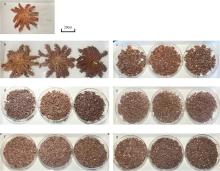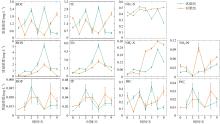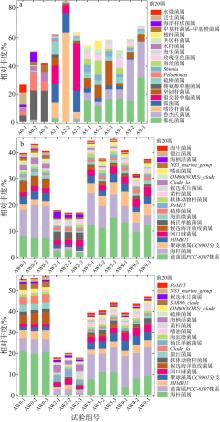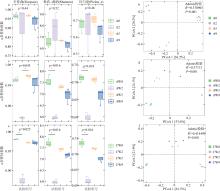Journal of Tropical Oceanography ›› 2025, Vol. 44 ›› Issue (5): 189-200.doi: 10.11978/2024234CSTR: 32234.14.2024234
• Marine Environmental Protection • Previous Articles Next Articles
Ecological and environmental effects of boiled and inactivated remains of crown-of-thorns starfish
LIU Jiangen1( ), LUO Hongtian2(
), LUO Hongtian2( )
)
- 1. The Sansha Ocean Center of the Ministry of Natural Resources, Sansha 573100, China
2. School of Marine Biology and Fisheries, Hainan University, Haikou 570228, China
-
Received:2024-12-16Revised:2025-02-20Online:2025-09-10Published:2025-10-14 -
Contact:LUO Hongtian
CLC Number:
- P764.1
Cite this article
LIU Jiangen, LUO Hongtian. Ecological and environmental effects of boiled and inactivated remains of crown-of-thorns starfish[J].Journal of Tropical Oceanography, 2025, 44(5): 189-200.
share this article
Add to citation manager EndNote|Reference Manager|ProCite|BibTeX|RefWorks
| [1] |
康霖, 2016. 西沙群岛海洋渔业资源调查研究[J]. 海洋与渔业 (2): 64-66.
|
|
|
|
| [2] |
李元超, 吴钟解, 梁计林, 等, 2019. 近15年西沙群岛长棘海星爆发周期及爆发原因分析[J]. 科学通报, 64(33): 3478-3484.
|
|
|
|
| [3] |
马清霞, 李宁, 李学刚, 等, 2012. 模拟研究沙海蜇消亡过程中海水pH变化及对海水酸化的影响[J]. 海洋科学, 36(12): 12-18.
|
|
|
|
| [4] |
曲长凤, 宋金明, 李宁, 等, 2016. 海水中沙海蜇消亡对水体碳、氮、磷的释放与补充[J]. 应用生态学报, 27(1): 299-306.
|
|
|
|
| [5] |
宋金明, 李鹏程, 1996. 南沙群岛海域沉积物-海水界面间营养物质的扩散通量[J]. 海洋科学, 20(5): 43-50.
|
|
|
|
| [6] |
夏荣林, 宁志铭, 余克服, 等, 2022. 长棘海星爆发对珊瑚礁区沉积物营养盐动力学的影响研究[J]. 海洋学报, 44(8): 23-30.
|
|
|
|
| [7] |
姚秋翠, 余克服, 廖芝衡, 等, 2022. 棘冠海星爆发及其对珊瑚礁的生态影响研究进展[J]. 生态学报, 42(18): 7517-7528.
|
|
|
|
| [8] |
朱士兵, 胡丹妮, 张会领, 等, 2019. 海口湾中间岸段海滩剖面短期时空变化及沉积动态分析[J]. 热带海洋学报, 38(5): 77-85.
doi: 10.11978/2018120 |
|
|
|
| [9] |
|
| [10] |
|
| [11] |
|
| [12] |
|
| [13] |
|
| [14] |
|
| [15] |
|
| [16] |
|
| [17] |
|
| [18] |
doi: 10.1073/pnas.1015782108 pmid: 21646531 |
| [19] |
doi: 10.1073/pnas.1208909109 pmid: 23027961 |
| [20] |
|
| [21] |
doi: 10.1038/srep28821 pmid: 27353576 |
| [22] |
|
| [23] |
|
| [24] |
|
| [25] |
|
| [26] |
|
| [27] |
|
| [28] |
|
| [29] |
|
| [30] |
|
| [31] |
|
| [32] |
|
| [33] |
|
| [34] |
|
| [35] |
|
| [36] |
|
| [37] |
|
| [38] |
|
| [39] |
|
| [40] |
|
| [41] |
|
| [42] |
doi: 10.1073/pnas.1614778114 pmid: 28630330 |
| [43] |
|
| [44] |
|
| [45] |
|
| [46] |
|
| [47] |
|
| [48] |
|
| [49] |
|
| [50] |
|
| [1] | LIN Ting, QU Jianjun, WU Zhifeng, LI Yupei. Study on the characteristics of shoreline changes and ecological protection strategies of coral sandy islands: A case study of North Island in the Xisha Islands, South China Sea [J]. Journal of Tropical Oceanography, 2025, 44(5): 154-165. |
| [2] | YAO Yu, LIU Xiaona, ZHOU Baobao, ZHOU Ting. Numerical simulation of wave motion over large roughness reef surfaces based on XBeach-NH [J]. Journal of Tropical Oceanography, 2025, 44(5): 31-38. |
| [3] | FENG Zhanquan, SU Maoliang, DU Yuanyuan, ZHONG Youling, ZHANG Junbin. MaxEnt model predicting potential distribution of Trichiurus japonicus in the coastal waters of China under global climate change [J]. Journal of Tropical Oceanography, 2025, 44(5): 77-85. |
| [4] | ZHAO Zhongwei, ZHAO Xuan, Chen Tianran, LI Wei. A study of the correlation between coastal morphological changes and oceanographic conditions of coral reef islands in the Xisha Islands from 2015 to 2023 [J]. Journal of Tropical Oceanography, 2025, 44(4): 25-44. |
| [5] | LI Wei, QU Ke, WANG Chao, YU Renshi, ZHANG Ze. Experimental study on the influence of submerged breakwater on the wave characteristics of infragravity waves on coral reefs [J]. Journal of Tropical Oceanography, 2025, 44(4): 177-186. |
| [6] | HE Yanchun, XU Shuna, LIU Yonghong, YANG Bin. Study on the secondary metabolites of the soft coral-derived fungus Scopulariopsis sp. SCSIO 41229 from the Beibu Gulf [J]. Journal of Tropical Oceanography, 2025, 44(4): 170-176. |
| [7] | LI Ruoan, LI Xuqing, CHEN Tianran. Graded responses of coral skeletal δ18O and Sr/Ca to ENSO in the southern South China Sea [J]. Journal of Tropical Oceanography, 2025, 44(4): 45-55. |
| [8] | CHEN Yuyue, JIANG Wei, YANG Haodan, YU Kefu. Changes and controlling factors of seawater phosphorus in Weizhou Island over the past 30 years: Insights from high-resolution coral records [J]. Journal of Tropical Oceanography, 2025, 44(3): 206-216. |
| [9] | WANG Chao, QU Ke, WANG Xu, GAO Rongze, WANG Aoyu. Influences of artificial fish reef on wave hydrodynamics of solitary wave on an uneven fringing reef [J]. Journal of Tropical Oceanography, 2025, 44(2): 30-38. |
| [10] | HE Yueming, ZHAO Lining, CHEN Xinqi, HE Jiahong, FAN Hao, CHEN Leyi, ZHANG Cuixian, HE Xixin. γ-Aromatic butenolides lignans from soft coral-associated symbiotic and epiphytic fungi Aspergillus terreus EGF7-0-1(I) [J]. Journal of Tropical Oceanography, 2025, 44(1): 146-153. |
| [11] | HUANG Qinyu, LYU Lina, LI Jie, JU Huimin, SU Hongfei. Microbial diversity of potential EHMC-degrading bacteria from coral [J]. Journal of Tropical Oceanography, 2025, 44(1): 133-145. |
| [12] | QIU Xingyu, LIU Qingxia, CHEN Zuozhi, CAI Yancong, HUANG Honghui. Characteristics of carbon and nitrogen stable isotopes of major fish species in coral reefs of the Nansha Islands in spring 2023 [J]. Journal of Tropical Oceanography, 2024, 43(6): 104-113. |
| [13] | HUANG Wen, FENG Yi, LI Ming, WU Qian, LUO Yanqiu, CHEN Yinmin, WANG Lirong, YU Kefu. A review on the population genetics of scleractinian corals [J]. Journal of Tropical Oceanography, 2024, 43(6): 13-26. |
| [14] | JIANG Rouyun, JIAN Lili, SHI Songbiao, TIAN Xinpeng. Diversity of culturable bacteria in the sedimentary sands of the Meiji Reef [J]. Journal of Tropical Oceanography, 2024, 43(6): 170-180. |
| [15] | XIE Hongyu, LIU Yong, LI Chunhou, ZHAO Jinfa, SUN Jinhui, SHEN Jianzhong, SHI Juan, WANG Teng. Species composition and evolutionary characteristics of coral reef fish in the Langhua Reef, Xisha Islands [J]. Journal of Tropical Oceanography, 2024, 43(6): 114-128. |
|
||













